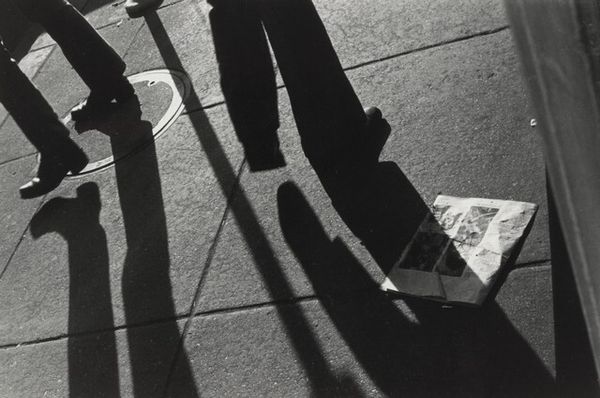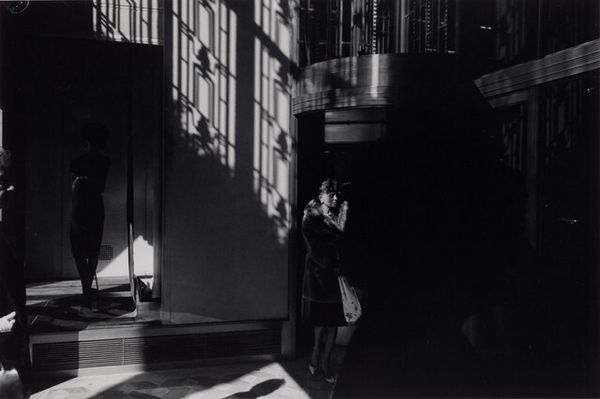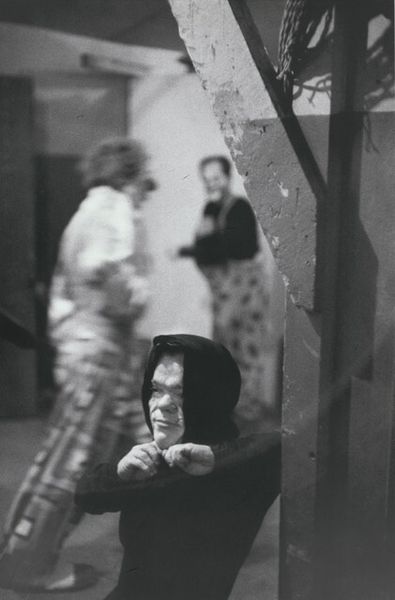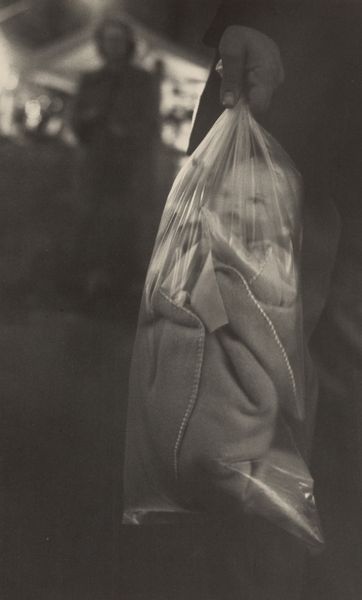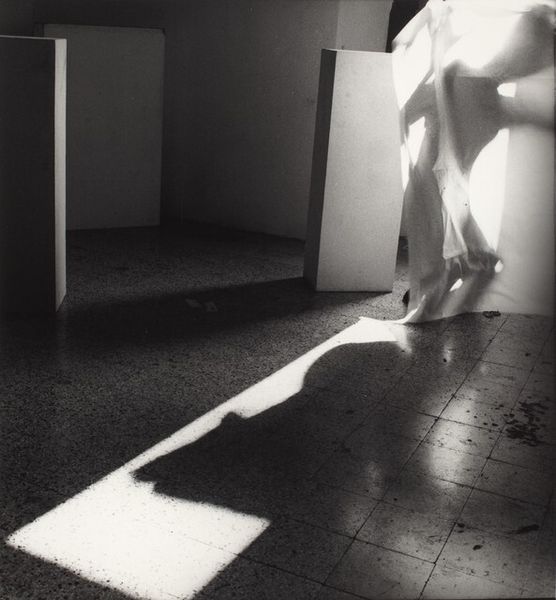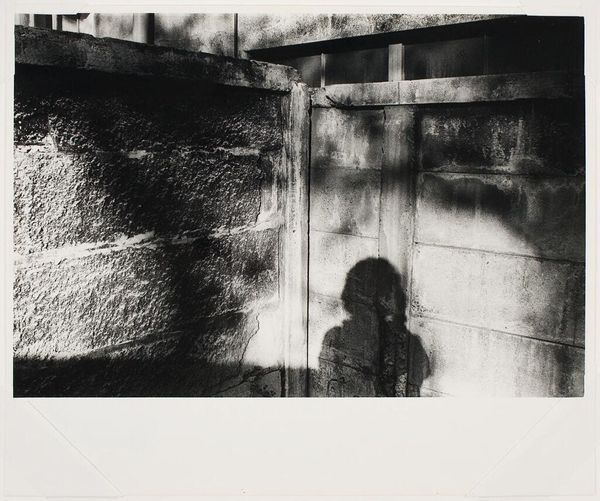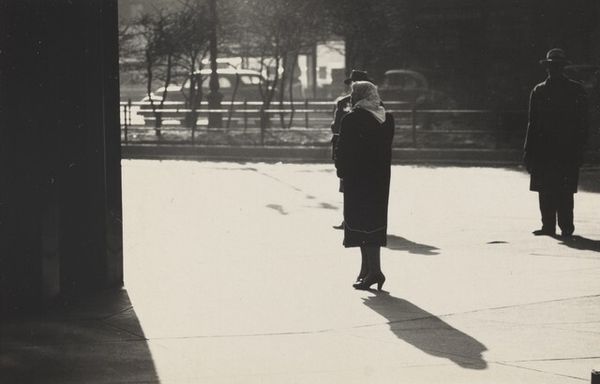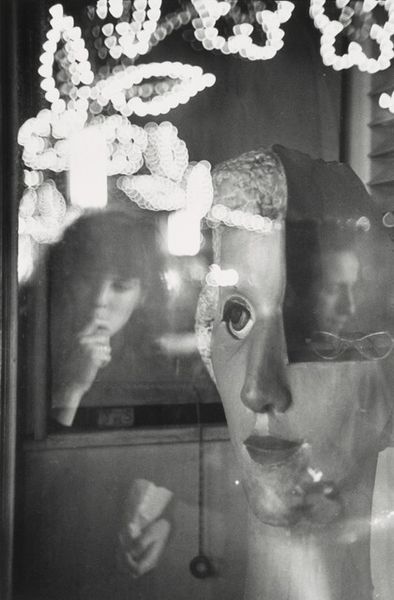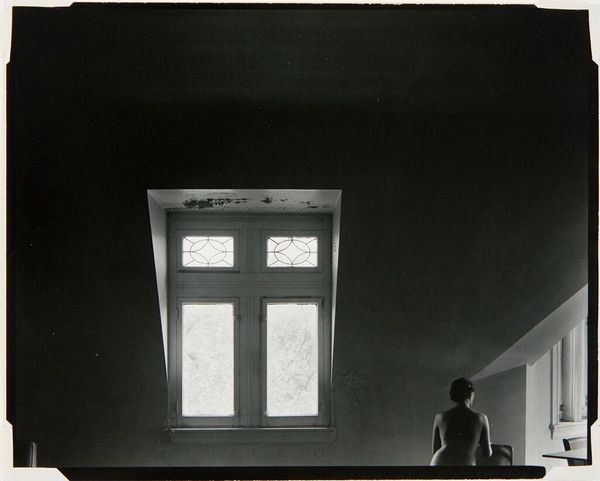
Dimensions: image: 19 × 28 cm (7 1/2 × 11 in.) sheet: 24.5 × 35 cm (9 5/8 × 13 3/4 in.)
Copyright: National Gallery of Art: CC0 1.0
Editor: Ed Grazda's "Juarez, Mexico," a gelatin silver print from 1972, really captures this feeling of ephemeral movement. It’s mostly dark, and figures blur into the background, kind of ghostlike. What cultural or symbolic layers do you see embedded in this fleeting image? Curator: I see echoes of ritual and remembrance woven into the photograph's texture. Look at how Grazda uses shadow – it shrouds the figures, obscuring identity. This act of veiling… doesn't it remind you of how memory itself obscures details over time, leaving behind potent emotional residue? Editor: That's fascinating. I was so focused on the blurriness as a stylistic choice, I didn’t think about memory itself blurring. So you are saying the blurring symbolizes an emotional imprint? Curator: Precisely. The figures' indistinct forms suggest archetypes rather than individuals. Consider the setting, Juarez, a border town steeped in history and transition. This location itself acts as a threshold, a liminal space. Notice how this adds layers of meaning? Are these the displaced? Are they merely passersby? Do you consider these visual ambiguities purposeful, in conveying broader experiences? Editor: I do! It makes the photograph so much richer than a simple snapshot. Curator: This photograph freezes a transient moment, yet the visual language used—the blur, the stark contrast—connects to deeper narratives of place, displacement, and the lasting echoes of human experience. What is now unveiled about the photograph given this information? Editor: I realize that what felt like a spontaneous image actually holds profound stories about memory, place, and cultural identity. It’s amazing how much the symbols speak!
Comments
No comments
Be the first to comment and join the conversation on the ultimate creative platform.
